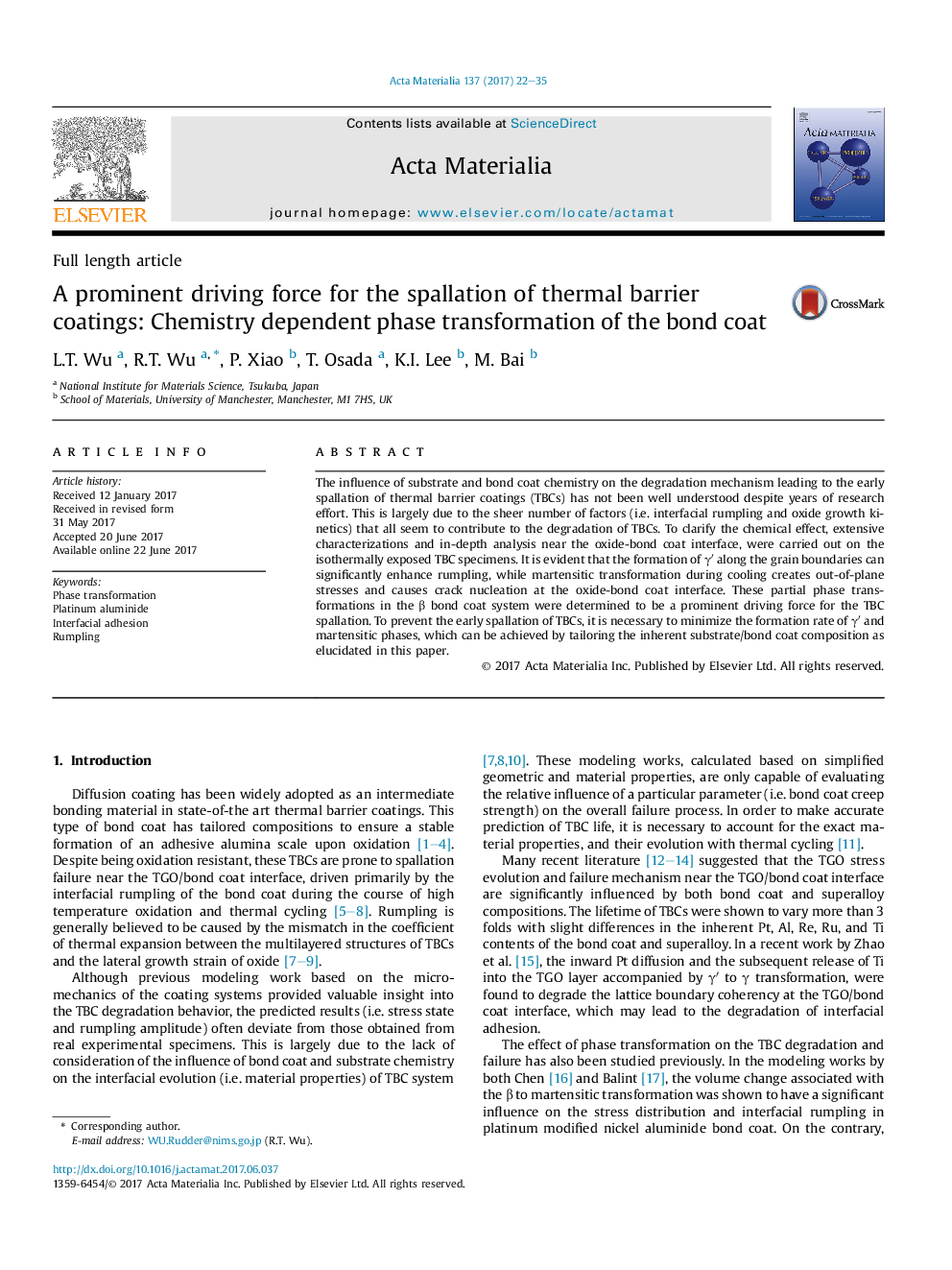| Article ID | Journal | Published Year | Pages | File Type |
|---|---|---|---|---|
| 5435999 | Acta Materialia | 2017 | 14 Pages |
The influence of substrate and bond coat chemistry on the degradation mechanism leading to the early spallation of thermal barrier coatings (TBCs) has not been well understood despite years of research effort. This is largely due to the sheer number of factors (i.e. interfacial rumpling and oxide growth kinetics) that all seem to contribute to the degradation of TBCs. To clarify the chemical effect, extensive characterizations and in-depth analysis near the oxide-bond coat interface, were carried out on the isothermally exposed TBC specimens. It is evident that the formation of γⲠalong the grain boundaries can significantly enhance rumpling, while martensitic transformation during cooling creates out-of-plane stresses and causes crack nucleation at the oxide-bond coat interface. These partial phase transformations in the β bond coat system were determined to be a prominent driving force for the TBC spallation. To prevent the early spallation of TBCs, it is necessary to minimize the formation rate of γⲠand martensitic phases, which can be achieved by tailoring the inherent substrate/bond coat composition as elucidated in this paper.
Graphical abstractDownload high-res image (171KB)Download full-size image
